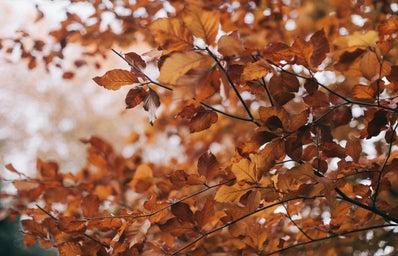Even though the spring is the most conventional time for gardening and summer gives us the most luscious of plants, you can continue to grow your garden throughout the fall! Although it may not include directly seeing new plants grow, there are lots of things you can do in preparation for the spring and to keep some of your plants growing through the winter. Follow this checklist to learn how to keep gardening during the fall!
- Collect Dry Seeds
-
A lot of different annual plants will either drop seeds out of their flowers or dry up with the seeds locked inside their dread stalks. Although most seed-dropping perennials will come back on their own (with the seeds they dropped), they usually drop more than they need. This means that you can pick up extra fallen seeds and put them away for the spring! Hollyhocks are especially good for this, as they drop seeds once they are dry — i.e. no drying required.
- Continue watering shrubs
-
It’s important to keep your plants full — so don’t forget to continue watering shrubs if the fall stays dry. If it’s a wet fall, however, there’s no need to water them. Shrubs, like junipers, take a good amount of water and watering them during the fall will keep them healthy throughout the winter until spring. You should continue to make sure your plants are getting enough water until the ground freezes! So once it begins to stay below zero degrees at night, you can stop watering.
- Bring Houseplants Back Inside
-
Some houseplants actually do much better outside during the summer. These usually include the more tropical type of plants, such as dragon trees, which tend to take a lot of sunlight and heat. Make sure to inspect the top of the soil and around the pot for pests and bugs before bringing your plant back in — or else you may have a few unwanted guests. When bringing these types of houseplants back inside, make sure you put them in front of a window that gets lots of sunlight and away from doors, so the cold air doesn’t get to it when you’re coming and going.
- Pull Straggler Weeds
-
Pulling weeds in the fall seems kind of pointless — they’re just going to dry in the winter right? Actually, pulling weeds in the fall can reduce the number of weeds that will grow in the spring. If you are going to pull weeds though, it’s really important to dig out the root of it. Dandelions, for example, will continue to grow if you only take their heads off. A great tip is to grab hold of the bottom of the weed as close to the ground as possible, then twist and pull.
- Rake and Compost Leaves
-
Although leaves work as a great fertilizer for the trees and plants in a forest, it’s important to clear all tree leaves around your garden. This is because they can actually stop the first bit of rain in the spring to get to your plants’ roots — and because we’ll be picking them up in the spring anyway, they won’t actually decompose so it can’t act as a fertilizer to your plants. It’s also important to clear these leaves, as little rodents, like mice, like to burrow in them before the snow comes.
These are just a few ways you can continue to garden and take care of your plants throughout the fall. Remember, just because it’s cold out doesn’t mean you have to stop doing what you love. Keep those plants healthy and get them ready for next spring!


